Remember the robot that raced with Tesla?

This is Swiss-Mile, a quadruped wheel-legged robot with the same name as the company developed by a spin-off company of the Swiss Federal Institute of Technology in Zurich, Switzerland, formerly known as ANYmal quadruped robot.
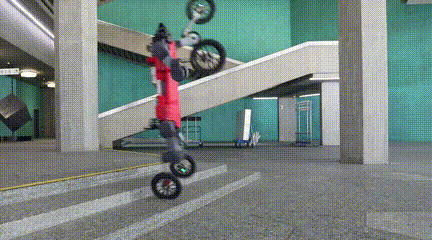
Less than half a year before it raced with Tesla, it has achieved another major upgrade.
This upgrade improves the algorithm of the robot, and the movement ability is directly UP UP UP!
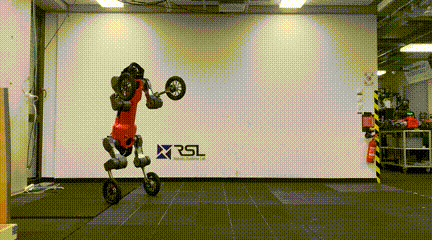
You can walk down stairs while standing on two legs:

(The editor’s inner OS: If I wear roller skates and go down the stairs, I may fall and eat shit)
If you are tired from climbing the stairs, take an elevator and open the elevator door with your front foot:

Facing obstacles with ease:
It also knows when to stand up and when to “get down,” with smoother transitions between standing with legs and quadrupeds:
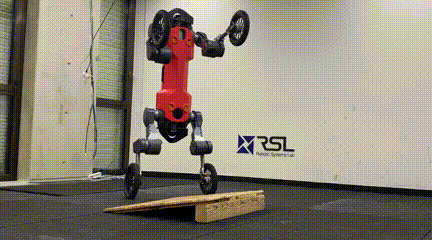
AMP algorithm first applied to real robot
Swiss-Mile has used Model Predictive Control (MPC) and Reinforcement Learning (RL) methods before, however this requires tedious tuning to get the desired movement pattern.
In this algorithm upgrade, the researchers used the Multi-AMP (Adversarial Motion Priors) algorithm to enhance the traditional reinforcement learning framework, which can automatically execute the imitation targets of multiple motion priors without heuristics. and exercise selection process.
What exactly is AMP?
This is an adversarial learning system based on physical character animation, proposed by researchers at UC Berkeley and Shanghai Jiaotong University, and Swiss-Mile is the first to apply this method to a real robot!
For general imitation learning, it is usually necessary to manually extract a large number of motion clips that need to be imitated as tracking targets, while using AMP can automatically select appropriate action clips to achieve the target task, it outsources error metric, phase and motion clip selection to the discriminator, The discriminator learns to distinguish state transitions from policy and motion data.
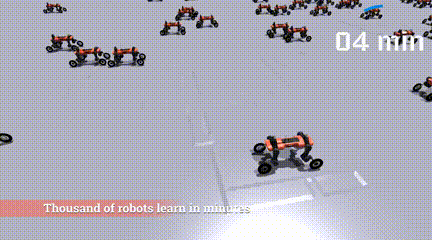
Simulation and deployment training
The researchers deployed the Multi-AMP framework on a Swiss-Mile with 16 degrees of freedom, enabling the Isaac Gym simulator, where more than 4,000 robots can simultaneously train skills in 42 minutes.
The training environment consists of three tasks:
The first task is quadrupedal movement, and the movement data consists of movements recorded by the RL policy.
The second task is to dodge the skill and let the machine hide under the table. Movement data for the skill is pipelined into trajectory optimization, deployed and tracked by the MPC controller.
The final task is a motion transition from “standing” to “quadruped”, where the robot uses data decoupling skills to stand up on its hind legs, slide on both legs, and finally sit down again using the same motions it did when standing up.
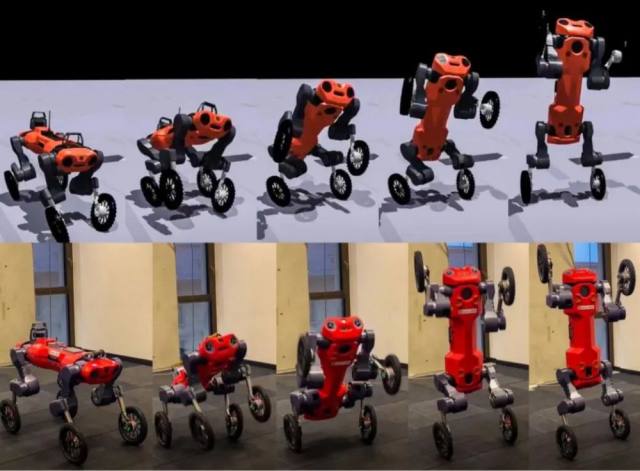
Finally, to deploy Swiss-Mile into a real environment, the researchers used actuator models of the leg joints to bridge the simulation-to-real gap, and use rough terrain training, random disturbances, etc. to improve robustness; if a certain joint velocity exceeds The actuator’s limit, through the final trajectory, allows the robot to learn to maintain a safety tolerance for that limit.
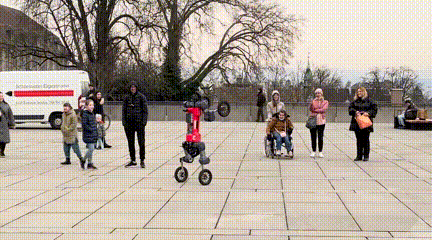
Quadruped or humanoid robot? 83% more efficient than leg systems!
Swiss-Mile is not only a quadruped robot, but also a humanoid robot.
Compared with the legged type, the wheel type has many significant advantages. After the algorithm is improved, the robot can stand up directly in the state of “humanoid robot” and perform difficult movements such as sliding, climbing stairs, and descending slopes. Moves more efficiently, much faster than walking on four legs, and is 83% more efficient than legged systems!
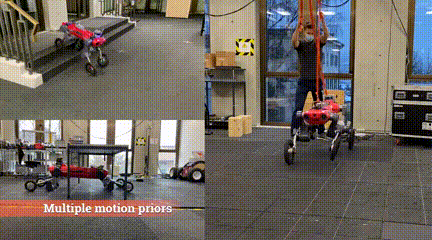
In the future, the company hopes to commercialize wheel-legged robots to perform a variety of tasks, including mapping, inspection, disaster relief, and logistics in urban environments.
Maybe one day, you’ll see robots use their raised “front legs” as arms, grab courier packages, put them in the cargo hold on their backs, and get back on all fours to deliver them as fast as they can. .




GIPHY App Key not set. Please check settings